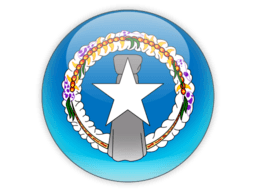
Regions of Northern Mariana Islands
Explore 4 regions
Cities of Northern Mariana Islands
Discover 2 cities across 2 regions
Saipan(1)
The Northern Mariana Islands are a group of 14 islands located in the Pacific Ocean, northeast of Guam. The islands are a United States Commonwealth and are considered an organized, unincorporated territory of the United States. The capital of the Northern Mariana Islands is Saipan, which is also the largest and most populated island in the chain.
The islands have a population of around 56,000 people, with the majority living on Saipan. The official languages are English, Chamorro, and Carolinian. The economy of the Northern Mariana Islands is heavily dependent on tourism, garment manufacturing, and fishing.
The islands have a tropical climate with a dry season from December to June and a wet season from July to November. The islands are home to a variety of wildlife, including several endemic species of birds and bats.
The history of the Northern Mariana Islands dates back to 1500 BC when the islands were first settled by Chamorros. The islands were later colonized by Spain in the 16th century, and then by Germany in the late 19th century. The islands were ceded to Japan after World War I, and then to the United States after World War II.
The Northern Mariana Islands are known for their beautiful beaches, crystal-clear waters, and vibrant culture. Visitors can enjoy a variety of activities, including snorkeling, diving, hiking, and sightseeing. Popular attractions include the Marianas Trench Marine National Monument, the Banzai Cliff, and the Saipan Beach.
The Northern Mariana Islands are a unique destination that offers a blend of Asian, Micronesian, and American cultures, making it a must-visit for anyone interested in the history and culture of the Pacific region.
Telephone Code
1-670
Local Emergency Phone
911
Vaccinations
See WHO recommendations
Climate
Tropical marine; moderated by northeast trade winds, little seasonal temperature variation; dry season December to June, rainy season July to October
Currency (Code)
US dollar is used
Electricity/Voltage/Plug Type(s)
110 V / 60 Hz / plug types(s): A, B
Major Languages
Philippine languages, Chamorro, English, other Pacific island languages, Chinese, other Asian languages
Major Religions
Christian (Roman Catholic majority, although traditional beliefs and taboos may still be found)
Potable Water
Yes, but some opt for bottled water
International Driving Permit
Suggested for non-US citizens.
Road Driving Side
Right
Tourist Destinations
Saipan Grotto Cave; Managaha Island; American Memorial Park; Saipan Battlefields; Mount Tapochao; Suicide Cliff; Bird Island
Major Sports
Baseball, basketball, mixed martial arts, ultimate (flying disc)
Cultural Practices
It is best to ask the waiter or waitress if they are permitted to keep your tip. In some establishments the tips are put back into the company. Some locals do not tip. Leave your tip accordingly.
Tipping Guidelines
A tip of 10-18% is common in restaurants. Tip taxi drivers about 10% of the fare. Bellboys usually get about $2 (USD) per luggage item.
Souvenirs
Traditional sarongs, shell jewelry, wishing dolls, coconut- and wood-carved crafts, crab shell crafts
Traditional Cuisine
Kelaguen — chicken, meat, or raw seafood marinated in lemon juice, salt, and hot peppers topped with coconut and scallions; the chicken or meat is grilled while the seafood is prepared raw and “cooked” for only a few hours in lemon juice
Geography
Area
total: 464 sq km
land: 464 sq km
water: 0 sq km
Climate
tropical marine; moderated by northeast trade winds, little seasonal temperature variation; dry season December to June, rainy season July to October
Natural resources
arable land, fish
People and Society
Population
51,295 (2023 est.)
Ethnic groups
Asian 50% (includes Filipino 35.3%, Chinese 6.8%, Korean 4.2%, and other Asian 3.7%), Native Hawaiian or other Pacific Islander 34.9% (includes Chamorro 23.9%, Carolinian 4.6%, and other Native Hawaiian or Pacific Islander 6.4%), other 2.5%, two or more ethnicities or races 12.7% (2010 est.)
Languages
Philippine languages 32.8%, Chamorro (official) 24.1%, English (official) 17%, other Pacific island languages 10.1% (includes Carolinian (official), Chinese 6.8%, other Asian languages 7.3%, other 1.9% (2010 est.)
Religions
Christian (Roman Catholic majority, although traditional beliefs and taboos may still be found)
Population growth rate
-0.35% (2023 est.)
Government
Government type
a commonwealth in political union with and under the sovereignty of the US; republican form of government with separate executive, legislative, and judicial branches
Capital
name: Saipan
Economy
Economic overview
US Pacific island commonwealth economy; growing Chinese and Korean tourist destination; hit hard by 2018 typhoon; dependent on energy imports; exempt from some US labor and immigration laws; longstanding garment production
Real GDP (purchasing power parity)
$1.242 billion (2016 est.)
Real GDP per capita
$24,500 (2016 est.)
Agricultural products
vegetables and melons, fruits and nuts; ornamental plants; livestock, poultry, eggs; fish and aquaculture products
Industries
tourism, banking, construction, fishing, handicrafts, other services
Exports
$914 million (2016 est.)
Exports - partners
South Korea 73%, Peru 5% (2019)
Exports - commodities
scrap iron, scrap copper, scrap aluminum, computers, laboratory diagnostic equipment (2019)
Imports
$893 million (2016 est.)
Imports - partners
Hong Kong 29%, Japan 29%, Singapore 16%, South Korea 9% (2019)
Imports - commodities
refined petroleum, trunks/cases, cars, watches, jewelry (2019)
International Airports in Northern Mariana Islands
Discover 3 major airports serving Northern Mariana Islands
Mark Northern Mariana Islands as Visited
Add Northern Mariana Islands to your personal travel map and track your journey around the world. Share your adventures and see your progress grow!